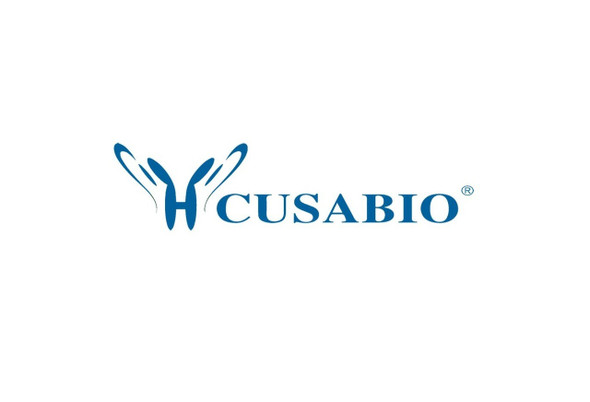Cusabio Human papillomavirus type 16 Recombinants
Recombinant Human papillomavirus type 16 Protein E6 (E6) | CSB-EP365854HML
- SKU:
- CSB-EP365854HML
- Availability:
- 3 - 7 Working Days
Description
Recombinant Human papillomavirus type 16 Protein E6 (E6) | CSB-EP365854HML | Cusabio
Alternative Name(s): E6; Protein E6
Gene Names: E6
Research Areas: Epigenetics and Nuclear Signaling
Organism: Human papillomavirus type 16
AA Sequence: MHQKRTAMFQDPQERPRKLPQLCTELQTTIHDIILECVYCKQQLLRREVYDFAFRDLCIVYRDGNPYAVCDKCLKFYSKISEYRHYCYSLYGTTLEQQYNKPLCDLLIRCINCQKPLCPEEKQRHLDKKQRFHNIRGRWTGRCMSCCRSSRTRRETQL
Source: E.coli
Tag Info: N-terminal 6xHis-tagged
Expression Region: 1-158aa
Sequence Info: Full Length
MW: 23.2 kDa
Purity: Greater than 90% as determined by SDS-PAGE.
Relevance: Plays a major role in the induction and maintenance of cellular transformation. Acts mainly as an oncoprotein by stimulating the destruction of many host cell key regulatory proteins. E6 associates with host E6-AP ubiquitin-protein ligase, and inactivates tumor suppressors TP53 and TP73 by targeting th to the 26S proteasome for degradation. In turn, DNA damage and chromosomal instabilities increase and lead to cell proliferation and cancer development. The complex E6/E6P targets several other substrates to degradation via the proteasome including host NFX1-91, a repressor of human telomerase reverse transcriptase (hTERT). The resulting increased expression of hTERT prevents the shortening of telomere length leading to cell immortalization. Other cellular targets including Bak, Fas-associated death domain-containing protein (FADD) and procaspase 8, are degraded by E6/E6AP causing inhibition of apoptosis. E6 also inhibits immune response by interacting with host IRF3 and TYK2. These interactions prevent IRF3 transcriptional activities and inhibit TYK2-mediated JAK-STAT activation by interferon alpha resulting in inhibition of the interferon signaling pathway.
Reference: Cellular and molecular biological aspects of cervical intraepithelial neoplasia.Kisseljov F., Sakharova O., Kondratjeva T.Int. Rev. Cytol. 271:35-95(2008)
Storage: The shelf life is related to many factors, storage state, buffer ingredients, storage temperature and the stability of the protein itself. Generally, the shelf life of liquid form is 6 months at -20?/-80?. The shelf life of lyophilized form is 12 months at -20?/-80?.
Notes: Repeated freezing and thawing is not recommended. Store working aliquots at 4? for up to one week.
Function: Plays a major role in the induction and maintenance of cellular transformation. Acts mainly as an oncoprotein by stimulating the destruction of many host cell key regulatory proteins. E6 associates with host UBE3A/E6-AP ubiquitin-protein ligase, and inactivates tumor suppressors TP53 and TP73 by targeting them to the 26S proteasome for degradation. In turn, DNA damage and chromosomal instabilities increase and lead to cell proliferation and cancer development. The complex E6/E6AP targets several other substrates to degradation via the proteasome including host DLG1 or NFX1, a repressor of human telomerase reverse transcriptase (hTERT). The resulting increased expression of hTERT prevents the shortening of telomere length leading to cell immortalization. Other cellular targets including BAK1, Fas-associated death domain-containing protein (FADD) and procaspase 8, are degraded by E6/E6AP causing inhibition of apoptosis. E6 also inhibits immune response by interacting with host IRF3 and TYK2. These interactions prevent IRF3 transcriptional activities and inhibit TYK2-mediated JAK-STAT activation by interferon alpha resulting in inhibition of the interferon signaling pathway.
Involvement in disease:
Subcellular Location: Host cytoplasm, Host nucleus
Protein Families: Papillomaviridae E6 protein family
Tissue Specificity:
Paythway:
Form: Liquid or Lyophilized powder
Buffer: If the delivery form is liquid, the default storage buffer is Tris/PBS-based buffer, 5%-50% glycerol. If the delivery form is lyophilized powder, the buffer before lyophilization is Tris/PBS-based buffer, 6% Trehalose, pH 8.0.
Reconstitution: We recommend that this vial be briefly centrifuged prior to opening to bring the contents to the bottom. Please reconstitute protein in deionized sterile water to a concentration of 0.1-1.0 mg/mL.We recommend to add 5-50% of glycerol (final concentration) and aliquot for long-term storage at -20?/-80?. Our default final concentration of glycerol is 50%. Customers could use it as reference.
Uniprot ID: P03126
HGNC Database Link: N/A
UniGene Database Link: N/A
KEGG Database Link: KEGG
STRING Database Link: N/A
OMIM Database Link: N/A










